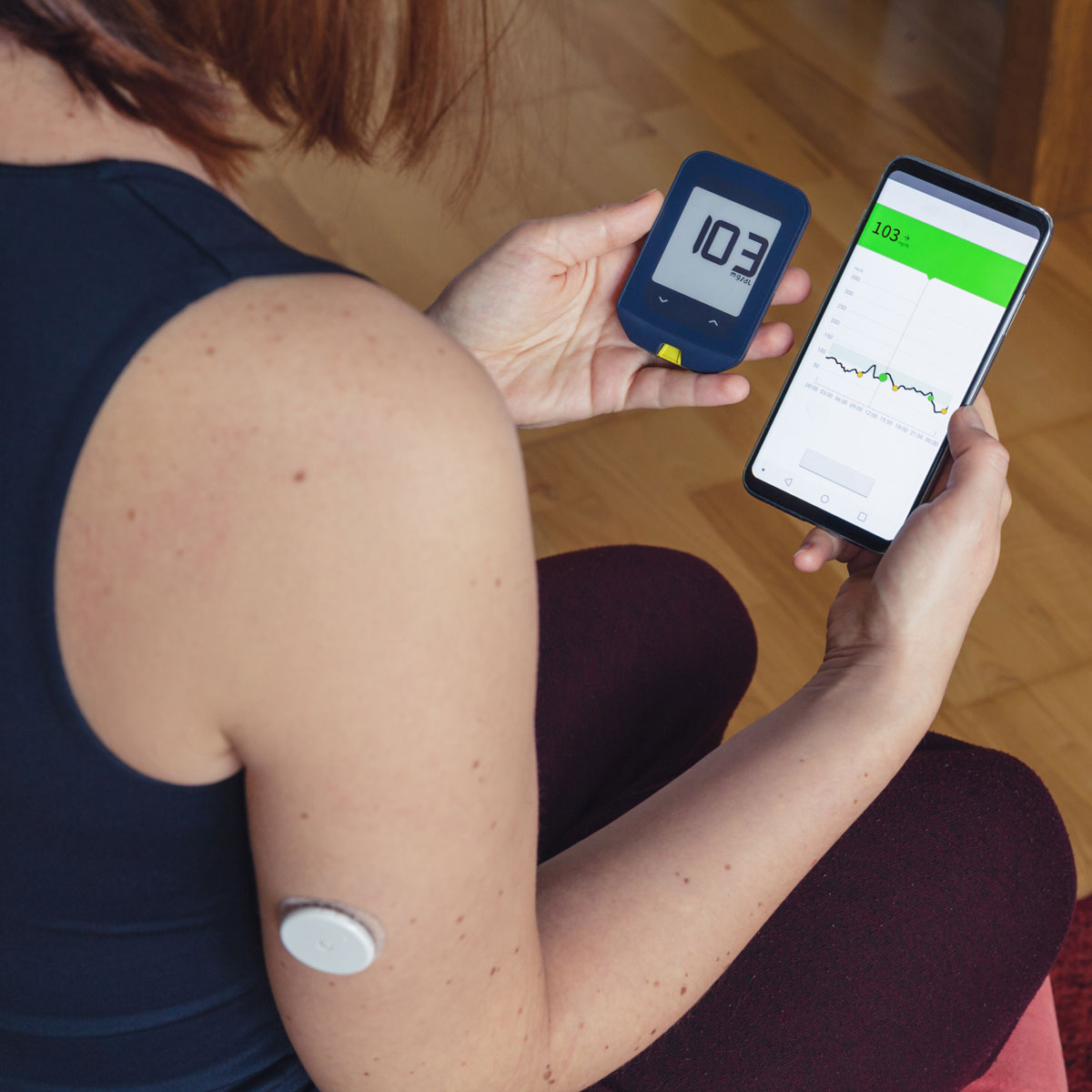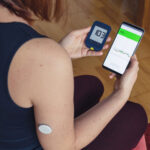April is Defeat Diabetes Month. Our friends over at Heatlhline.com have written the following article on how sleep apnea affects diabetes. We thought we’d share!
The impact of sleep apnea goes far beyond leaving you feeling tired in the morning. For people with diabetes, sleep apnea can influence your glucose levels at all times of day, change how your body responds to insulin, and play a part in diabetes complications later in life.
In the general population, an estimated 6 to 17 percent of adults experience some form of sleep apnea. But among those with diabetes, that number is dramatically higher with more than half of people with type 2 diabetes experiencing obstructive sleep apnea. Research shows it’s also quite high in those who live with type 1 diabetes.
Read on to learn more about the relationship between diabetes and sleep apnea, how it can impact your diabetes management and what you can do to address this breathing disorder that impacts sleep.

What is sleep apnea?
Sleep apnea happens when a person stops breathing while they are sleeping.
Unlike disrupted sleep, which can be caused by poor sleep hygiene or various physical or mental conditions, sleep apnea is a breathing disorder.
Signs of sleep apnea include the following:
- loud snoring
- gaps in breathing
- choking or gasping for air
- falling asleep during the day
Sleep apnea leaves the body deprived of oxygen which, in turn disrupts how the heart functions, blood pressure, and metabolism. These effects can be severe and make it crucial for people with diabetes to understand and treat sleep apnea when it occurs.
Of the three types of sleep apnea (central, obstructive, and complex), obstructive sleep apnea (OSA) is most common. With OSA the soft tissues at the back of the throat collapse, blocking the airway and interrupting the person’s breathing. OSA is associated with obesity but also happens in those who are not obese.
Why is sleep apnea more common in type 2 diabetes?
A symbiotic relationship has been observed between sleep apnea and type 2 diabetes. One seems to worsen the other, when left unaddressed.
Sleep apnea deprives the body of oxygen, which has a direct negative effect on glucose levels and insulin resistance. Its effect can be dramatic, promoting insulin resistance and changing glucose metabolism to the extent that OSA is associated with the development of type 2 diabetes.
Obesity is a recognized comorbidity of type 2 diabetes, and that comorbidity increases the likelihood or developing OSA. Fat deposits in the neck can impinge on the airway and abdominal fat can compress the chest wall—both constricting breathing while lying down or sleeping.
Does sleep apnea impact blood sugar?
Yes, it does.
When the body is deprived of oxygen the amount of carbon dioxide in the bloodstream increases. In this state insulin resistance increases leading to higher levels of glucose in the blood. Over time these persistently higher glucose levels lead to a higher A1C.
Beyond its effect on glucose levels, sleep apnea and other disruptions to sleep can negatively affect the progression of diabetes and the development of complications. The oxygen deprivation associated with poor quality sleep raises blood pressure and aggravates heart function. It’s associated with high blood pressure, heart disease, and stroke.
How to manage sleep apnea with diabetes?
Following the standard practices of effective diabetes management — keeping glucose levels in range, healthy food choices, exercising regularly, and taking medications as prescribed) — is a good starting point for managing sleep apnea. However, there is more that can be done.
- Begin with addressing any sinus or allergy issues that interfere with breathing clearly. This might include taking medication to keep the sinuses open and uncongested.
- Being overweight or obese is another condition to address in treating sleep apnea. By reducing weight there is less pressure on the chest cavity and less likelihood of fat in the airway passage. Addressing both of these decreases the likelihood of unobstructed breathing while sleeping.
- A continuous positive airway pressure (CPAP) machine can be prescribed, before our after an overnight sleep study is completed. The person wears a mask while sleeping. Attached to that mask is a hose and a device that delivers pressurized air. The pressurized air keeps the airway open, stopping disruptions to the person’s breathing.
- Surgery is also an option. These surgeries involve removing or shrinking the tissue at the back of the back of the mouth or top of the neck. By removing this soft tissue there is less likelihood that the airway will be obstructed while sleeping.
Using fitness trackers for monitoring sleep quality
A medical diagnosis of sleep apnea requires a formal sleep study where the person sleeps with sensors attached to their body and is monitored through the night.
But with the availability of fitness trackers and mobile apps, it’s become more common for people to track and record the quality of their sleep. This can be especially helpful when sleep apnea is suspected.
Importantly, a sleep or fitness tracker does not replace a medical professional’s diagnosis of sleep apnea. But it can help identify sleeping patterns to discuss with a medical professional.
Fitness trackers use a combination of sensors that measure body movement (restlessness), heart rate, and breathing rate to track sleep quality. These readings are then analyzed and reported in their app.
What the app reports varies by device, but can include things like:
- How long it took to fall asleep
- How long the person remained asleep
- How many times the person woke up through the night
- How long they stayed awake before going back to sleep
- How long the person stayed in various stages of sleep (light, deep, and REM)
- These individual readings are often combined into a composite score that reflects the overall quality of sleep (poor, fair, good, excellent).
The apps often also include information on how to improve overall sleep. This can include advice on improving sleep hygiene and notifications to reinforce a standard bedtime and daily routine for winding down.
Among the most popular fitness trackers, Fitbit, Apple Watch, Amazon Halo, and Oura Ring all offer some ability to track sleep. They all report on the amount of time the person is sleeping and the overall quality of that sleep.
Takeaway
Because of the negative effects sleep apnea can have on glucose levels it’s particularly important for people with diabetes to pay attention to the quality of their sleep. Left unaddressed, what seems like inconsequential snores in the night can lead to elevated A1Cs, high blood pressure, and heart problems.
Thankfully, we do have tools and treatments to identify and then address sleep apnea—ultimately avoiding the most serious complications.
Sources:
Original article: https://www.healthline.com/health/diabetes/sleep-apnea-and-diabetes
Senaratna C, et al. (2017). Prevalence of obstructive sleep apnea in the general population: A systematic review. https://pubmed.ncbi.nlm.nih.gov/27568340/
Muraki I, et al. (2018). Sleep apnea and type 2 diabetes. https://www.ncbi.nlm.nih.gov/pmc/articles/PMC6123041/
Yano Y, et al. (2020). Sleep characteristics and Measurements of Glucose Metabolism in Blacks: The Jackson Heart Study. https://www.ahajournals.org/doi/10.1161/JAHA.119.013209
Farabi, S. (2016). Type 1 Diabetes and Sleep. https://www.ncbi.nlm.nih.gov/pmc/articles/PMC4755454/
American Diabetes Association Standards of Care (2022). Glycemic Targets: Standards of Medical Care in Diabetes—2022. https://diabetesjournals.org/care/article/45/Supplement_1/S83/138927/6-Glycemic-Targets-Standards-of-Medical-Care-in

